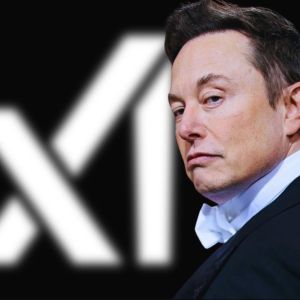
Elon Musk is reportedly seeking up to $12 billion, just weeks after raising $10 billion for xAI to stay competitive in the costly AI race. Insiders say xAI has partnered with Valor Equity Partners, led by Antonio Gracias, to structure a potential $12 billion capital raise to support its expansion as per a WSJ report. Following a $10 billion raise earlier, these future funds would buy a large batch of high-end Nvidia GPUs. xAI plans to lease them to build and run a huge data center for training and powering Grok. Musk recently posted on X, “xAI’s goal is to deploy 50 million H100‑equivalent compute units (with much better power efficiency) within five years.” Facing well‑funded competitors, Google, Microsoft, and Meta, Grok has struggled to find a foothold and recently sparked backlash when it shared racist and controversial posts on X. xAI has since issued an apology for “horrific behavior.” To strengthen xAI’s strained balance sheet, Musk has reallocated capital across his businesses. SpaceX invested $2 billion in xAI, and last month xAI used Grok’s IP to secure $5 billion in debt. Analysts warn that xAI will likely require additional capital in the near term, due to the steep expenses of large‑scale model training. Rather than tapping third‑party cloud platforms like OpenAI and Anthropic do, xAI is opting to develop and manage its own hardware backbone. xAI faces massive burn rate but minimal revenue xAI is spending nearly all of its income, about $13 billion burned in 2025. However, it is still unprofitable with very little revenue so far. The proposal to finance GPUs via a structured lease‑financing arrangement could trim billions from initial capital outlays, but at the expense of ongoing payment obligations. Despite the risks, investors remain confident in Musk’s track record with SpaceX and Tesla, recalling how he’s rewarded them before. Some even anticipate he’d tap other ventures to strengthen xAI if necessary. In only 122 days, xAI built its first huge data center, Colossus in Memphis, Tennessee, equipping it with 100,000 Nvidia GPUs. 92 days later, capacity was boosted to 200,000 units. Last year, Nvidia CEO Jensen Huang called it “superhuman” and said, “Elon is singular in his understanding of engineering and construction and large systems and marshalling resources.” xAI has outlined ambitions for a million‑GPUs powering Grok. For the next phase, Colossus 2, it’s again engaging Valor, whose capital has previously flowed into SpaceX, Tesla, SolarCity, The Boring Company, and Neuralink. The structure calls for Valor, alongside other buyout firms set up a fund that borrows billions to buy GPUs. xAI would then make lease payments or risk having the hardware taken back. What happens if xAI can’t pay its debts? Valor is negotiating with various private‑credit pools, aiming to finalize terms shortly, though insiders caution the arrangement could still fall apart. Creditors are worried about how big the loan is and how long it lasts. They want it paid back in three years with borrowing limits, since AI chips lose value fast as newer models appear and demand shifts. During its latest $5 billion debt placement , xAI raised money with bonds and loans backed by its data centers, GPU inventory, and the Grok IP. They offered a 12.5% yield, showing investors demanded a big premium for the risk. Should xAI default, creditors could rent Colossus’ infrastructure to alternative AI operators and seize rights to the Grok model, which underpins several of Musk’s projects. Moreover, that financing arrangement limits xAI’s future borrowing at $5 billion, aside from any new GPU leases. Cryptopolitan Academy: Coming Soon - A New Way to Earn Passive Income with DeFi in 2025. Learn More


